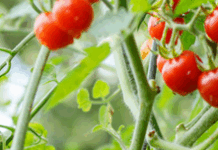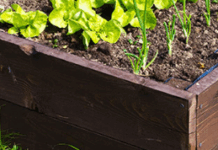It’s December and I’m getting into the spirit! Many of you will have or will be putting up a Christmas Tree soon. The following are facts about Christmas trees you may not know!
- The most popular variety of Christmas trees are: balsam fir, fir, Fraser fir, Scotch pine, Douglas fir, noble Virginia pine and white pine.
- Christmas trees are grown and harvested in all 50 states.
- The first decorated Christmas tree was in Riga, Latvia in 1510.
- Besides evergreens, other types of trees such as cherry and hawthorns were used as Christmas trees in the past.
- Thomas Edison’s assistant, Edward Johnson, came up with the idea of electric lights for Christmas trees in 1882. Christmas tree lights were first mass-produced in 1890.
- In 1856 Franklin Pierce, the 14th President of the United States, was the first President to place a Christmas tree in the White House.
- President Coolidge started the National Christmas Tree Lighting Ceremony on the White House lawn in 1923.
- Nineteenth century Americans cut their trees in nearby forests. Today most real Christmas trees are grown on farms as sustainable crops like corn or pumpkins.
- 98 percent of all Christmas trees are grown on farms, while only 2% are cut from the wild.
- To ensure enough trees for harvest, growers plant one to three seedlings for every tree harvested.
- In 2012, 46 million Christmas tree seedlings were planted by U.S. growers.
- More than 2,000 trees are usually planted per acre. On average 1,000-1,500 of these trees will survive. In the northern part of the country, perhaps 750 trees will remain.
- Almost all trees require shearing to attain the Christmas tree shape. At six to seven feet, trees are ready for harvest.
- It takes six to ten years of fighting rain, wind, hail and drought to get a mature tree.
- Most Christmas trees are cut weeks before they get to a retail outlet. It is important to keep them watered thoroughly when they reach your home. In the first week, a Christmas tree in your home will consume as much as a quart of water per day.
- Live Christmas trees have been sold commercially in the United States since about 1850.
- The first Christmas tree retail lot in the United States was started by Mark Carr in New York, in 1851.
- In 2012, 35% of real Christmas trees sold were from chain stores or garden centers/nursery, 24% from cut and harvest farms, 15% from retail tree lots, and 15% from non-profit groups.
- In 2012, 85% of the Christmas trees purchased were pre-cut, and 14% were cut-your-own.
- Christmas trees are baled to protect the branches from damage during shipping.
- In the United States, there are more than 15,000 Christmas tree farms.
- There are approximately 350 million Christmas trees growing on U.S. farms.
- Approximately 100,000 people are employed full or part-time in the Christmas tree industry.
- 24.5 million farm-grown Christmas trees were purchased in the United States in 2012, with a real market value of $1.01 billion.
- Oregon, North Carolina, Michigan, Pennsylvania, Wisconsin, Washington, New York, and Virginia are the top Christmas tree producing states.
- 350,000 acres of land in the United States are in production for growing Christmas trees.
- 93% of real Christmas tree consumers recycle their tree in community recycling programs, their garden or backyard.
- Recycled real Christmas trees have been used to make sand and soil erosion barriers and been placed in ponds for fish shelter.
- Growing Christmas trees provides a habitat for wildlife.
- Christmas trees can remove dust and pollen from the air.
- An acre of Christmas trees provides the daily oxygen requirements of 18 people.
: Scott Eckert, Harvey County Extension Agent, Horticulture




